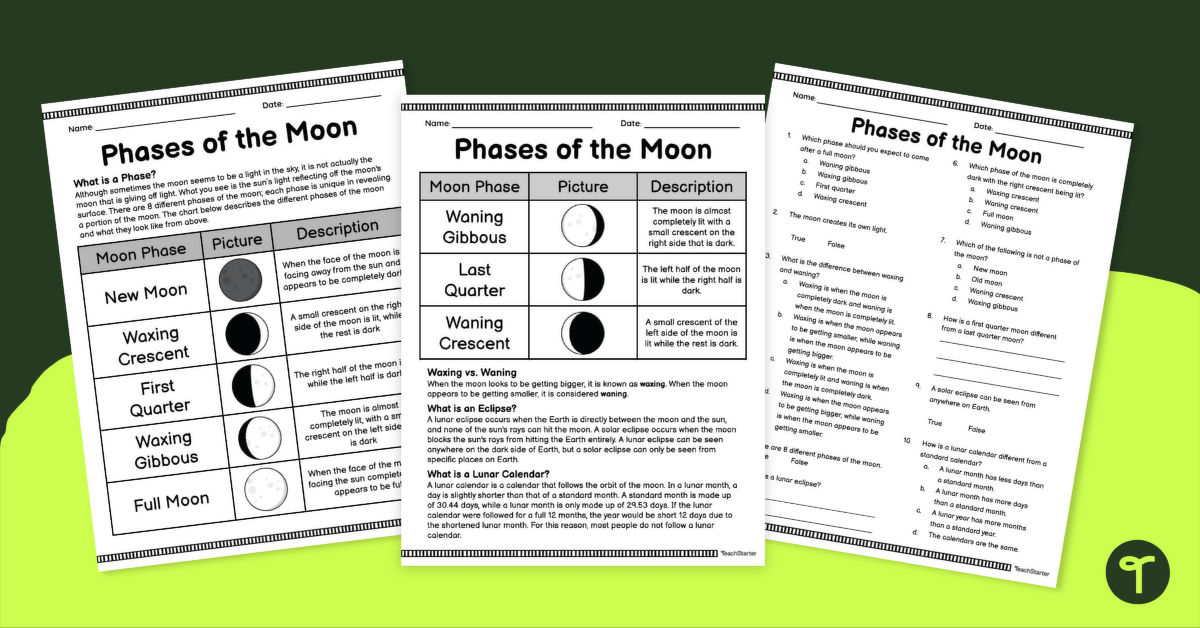
Analyze different moon phases and how their visual appearances change over time with this reading comprehension worksheet.
Editable Editable: Google Slides Non-Editable Non-Editable: PDF Pages Pages: 4 Pages Curriculum Curriculum: TEKS Grades Grades: 3 - 5
Analyze different moon phases and how their visual appearances change over time with this reading comprehension worksheet.
Editable Editable: Google Slides Non-Editable Non-Editable: PDF Pages Pages: 4 Pages Curriculum Curriculum: TEKS Grades Grades: 3 - 5Analyze different moon phases and how their visual appearances change over time with this reading comprehension worksheet.
Do your students know the different moon phases? Are they able to determine which phase comes next in the lunar cycle? The moon follows a predictable pattern that is observable from Earth. Teach Starter has created an easy-to-use worksheet that you can use in your science or reading class to help your students understand this topic.
With this reading comprehension worksheet, students will read and learn about the following:
After reading the informational passage, students must complete 10 multiple-choice, true/false, and short-answer questions.
An answer key is included with your download to make grading fast and easy!
Use the dropdown icon on the Download button to choose between the PDF or editable Google Slides version of this resource.
Because this resource includes an answer sheet, we recommend you print one copy of the entire file. Then, make photocopies of the blank worksheet for students to complete.
To save paper, we suggest printing this multi-page worksheet double-sided.
Turn this teaching resource into a sustainable activity by printing on cardstock and slipping it into a dry-erase sleeve. Students can record their answers with a whiteboard marker, then erase and reuse them.
This resource was created by Madison Evans, a teacher in North Carolina and Teach Starter Collaborator.